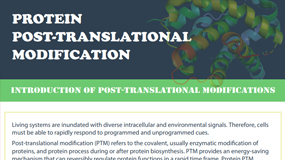Cellulose is a natural polysaccharide comprised of a linear chain of β-1,4 linked D-glucose units with a degree of polymerization ranged from a few hundreds to over ten thousand. It is the main substance that makes up most of the plant's cell walls, and it helps plants to remain stiff and upright. Since it is made by all plants, it is the most abundant of all naturally occurring organic compounds on Earth. Cellulose can be processed to produce papers and fibres and is chemically modified to produce substances used in the manufacture of such items as plastics, photographic films, and rayon. The derivatives from cellulose can be used as adhesives, thickening additives for food, and moisture-proof coatings. Due to its abundance as well as its sustainability, cellulose has been widely used in the manufacture of fibers, paper and films.
Cellulose is composed of crystalline and amorphous regions (Figure 1). The crystalline structure is conserved by hydrogen bonds and Van der Waals forces, while in amorphous structure exists twists and torsions that alter the ordered arrangement. Cellulose crystallinity and cellulose content are two of the most important microstructural parameters that affect the mechanical properties of natural plant fibers. Crystalline cellulose has significantly better stiffness than all other components. It is typically important to select plant fibers with high cellulose content and high cellulose crystallinity when they are used as reinforcement in structural applications.
 Figure 1. Crystalline and amorphous structure of cellulose [1]
Figure 1. Crystalline and amorphous structure of cellulose [1]
There are several methods for the analysis of cellulose content. One of the methods is based on insolubility of cellulose in water and its resistance to action of dilute acids and bases. The sample is degraded with a mixture of nitric acid and acetic acid and boiled in apparatus that contained a condenser. The solution is then filtered through a funnel. Then the filter paper containing an insoluble residue is dried in oven and measured. The other method is based on the measurement of the toal sugar content [2]. Plant fiber is soaked in acetic acid and nitric acid to remove lignin, hemicellulose and xylans. Cellulose in the sample is then hydrolyzed to sugars. Total sugar content in solution is determined by anthron test. During heating glucose with sulphuric acid, colored product 5-hydroximetylfurfural is produced, in reaction of aldehyde groups of glucose with anthron. The concentration of 5-hydroximetylfurfural is determined spectrophotometrically. The measurement is performed on UV/Vis spectrophotometer at 625 nm. The concentration of glucose s calculated using standard curve. Based on the concentration of glucose, the content of cellulose is then calculated.
As one of the leading companies in the omics field with over years of experience in omics study, Creative Proteomics provides glycomics analysis service customized to your needs. Contact us to discuss your project.
How to place an order

*If your organization requires signing of a confidentiality agreement, please contact us by email.
Reference
- Quiroz Castañeda, Rosa & Folch-Mallol, Jorge. (2013). Sustainable Degradation of Lignocellulosic Biomass - Techniques, Applications and Commercialization.
- Gordana J. Kulić and Vesna B. Radojičić (2011) ANALYSIS OF CELLULOSE CONTENT IN STALKS AND LEAVES OF LARGE LEAF TOBACCO. Journal of Agricultural Sciences, Vol. 56, No. 3, P 207-215.




















